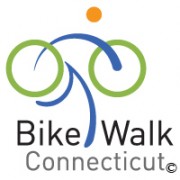Million Dollar Packages Routine Atop Connecticut Hospitals, CEO’s Receive Highest Pay at 26 of 30
/
Newly released data from the state Office of Health Care Access, which regulates hospitals in Connecticut, reflects that 18 Connecticut hospital executives received pay packages of over $1 million during fiscal year 2012.
Leading the top-compensated list – and exceeding $1.5 million in total compensation for their highest paid individual staff member - were William Backus Hospital ($3.4 million), Hartford Hospital ($3.3. million), and Yale- New Haven Hospital ($2.8 million).
In addition to the top three, there were seven other hospitals where the highest compensated official received a pay package exceeding one million dollars during FY2012. Rounding out the top ten were officials at Greenwich Hospital ($1.5 million), Saint Francis Hospital & Medical Center ($1.5 million), Stamford Hospital ($1.5 million), Hospital of Central CT ($1.5 million), Bridgeport Hospital ($1.1 million), Hospital of Saint Rafael ($1.8 million), and Middlesex Hospital ($1 million).
An analysis by Connecticut by the Numbers indicates that the top salary and benefit package at all but four of the state’s 30 hospitals went to top administrators, usually the President or CEO. The exceptions included  New Milford Hospital, where the president’s total package ranked 5th and a lab physician led the list; at Charlotte Hungerford Hospital, where the CEO also ranked 5th and a physician surgeon ranked first, and at Rockville General Hospital which was led by the Medical Director, with the CEO placing third in the salary hierarchy. At Windham Community Memorial Hospital, the top administrator – the Vice President of Operations – placed 7th in salary and fringe benefits amongst hospital leadership.
New Milford Hospital, where the president’s total package ranked 5th and a lab physician led the list; at Charlotte Hungerford Hospital, where the CEO also ranked 5th and a physician surgeon ranked first, and at Rockville General Hospital which was led by the Medical Director, with the CEO placing third in the salary hierarchy. At Windham Community Memorial Hospital, the top administrator – the Vice President of Operations – placed 7th in salary and fringe benefits amongst hospital leadership.
Only five hospitals in the state saw the top ranked individual receive less than half a million dollars in compensation. The lowest was at Rockville General Hospital, where the Medical Director received $324,458, followed by Windham Community Memorial Hospital, where the top Physician/Hospitalist earned $463,270, John Dempsey Hospital, where the CEO earned $477,518, New Milford Hospital, where the top package was $480,036 and Johnson Memorial Hospital, where the President’s pay package totaled $483,070.
The OHCA report did report the names of individual administrators, but listed the top 10 paid positions at the state's 30 acute care hospitals. The state's two largest hospitals—Hartford Hospital and Yale New Haven Hospital—each had four senior executives that received million-dollar plus pay packages last fiscal year, the Hartford Business Journal has reported, while Stamford Hospital had two administrators earn over $1 million.
The highest paid hospital executive in fiscal 2012 was the former president & CEO of William Backus Hospital, who received a total pay package of $3.4 million. That included $3.2 million in fringe benefits, the report said. In addition, the President & CEO received compensation of $975,550 during the year. The highest active paid hospital administrator was Hartford Hospital's vice president of academic affairs and chief academic officer, who received $3.4 million in compensation.
In 2007, there were seven hospital CEO’s earning in excess of $1 million in compensation, according to the Office of Legislative Research. In fiscal year 2005, five of the top paid positions at the state’s 30 hospitals received more than $1 million, data from the Office of Legislative Research indicates – all of them CEO’s.
Hospitals are required to provide their top ten highest paid hospital positions annually to OHCA. The full list for FY2012 is available on the OHCA website. The top salary at each hospital, according to the report:
Bridgeport Hospital, President & CEO: $1,101,139
Bristol Hospital, President & CEO: $605,526
Charlotte Hungerford Hospital, Physician Surgeon: $661,640
CT Children’s Medical Center, President & CEO : $748,347
Danbury Hospital, Chief Executive Officer: $955,838
Day Kimball Hospital, President & CEO: $514,375
Essent-Sharon Hospital, Chief Executive Officer: $736,907
Greenwich Hospital, President & CEO: $1,530,629
Griffin Hospital, Chief Executive Officer: $558,543
Hartford Hospital, VP, Academic Affairs & CAO: $3,351,507
Hospital of Saint Rafael, President : $1,803,605
John Dempsey Hospital, CEO : $477,518
Johnson Memorial Hospital, President : $483,070
Lawrence and Memorial Hospital, President, CEO: $761,734
Manchester Memorial Hospital,CEO: $560,793
Middlesex Hospital, President/CEO: $1,022,460
MidState Medical Center, President/CEO: $958,020
Milford Hospital, President: $579,475
New Milford Hospital, Lab-Physician: $480,036
Norwalk Hospital, President & CEO : $901,148
Rockville General Hospital, Medical Director: $324,458
Saint Francis Hospital & Med Ctr., President: $1,521,090
Saint Mary’s Hospital, President & CEO: $791,256
Saint Vincent’s Medical Center, Chief Executive Officer: $2,394,278
Stamford Hospital, President & CEO: $1,532,094
The Hospital of Central CT, President & CEO: $1,499,546
Waterbury Hospital, President: $520,298
William W. Backus Hospital, Former Pres. & CEO: $3,357,690
Windham Community Memorial Hospital, Physician/Hospitalist: $463,270
Yale-New Haven Hospital, President & CEO* : $2,803,228
*includes Yale-New Haven Hospital and Yale-New Haven Health System













































